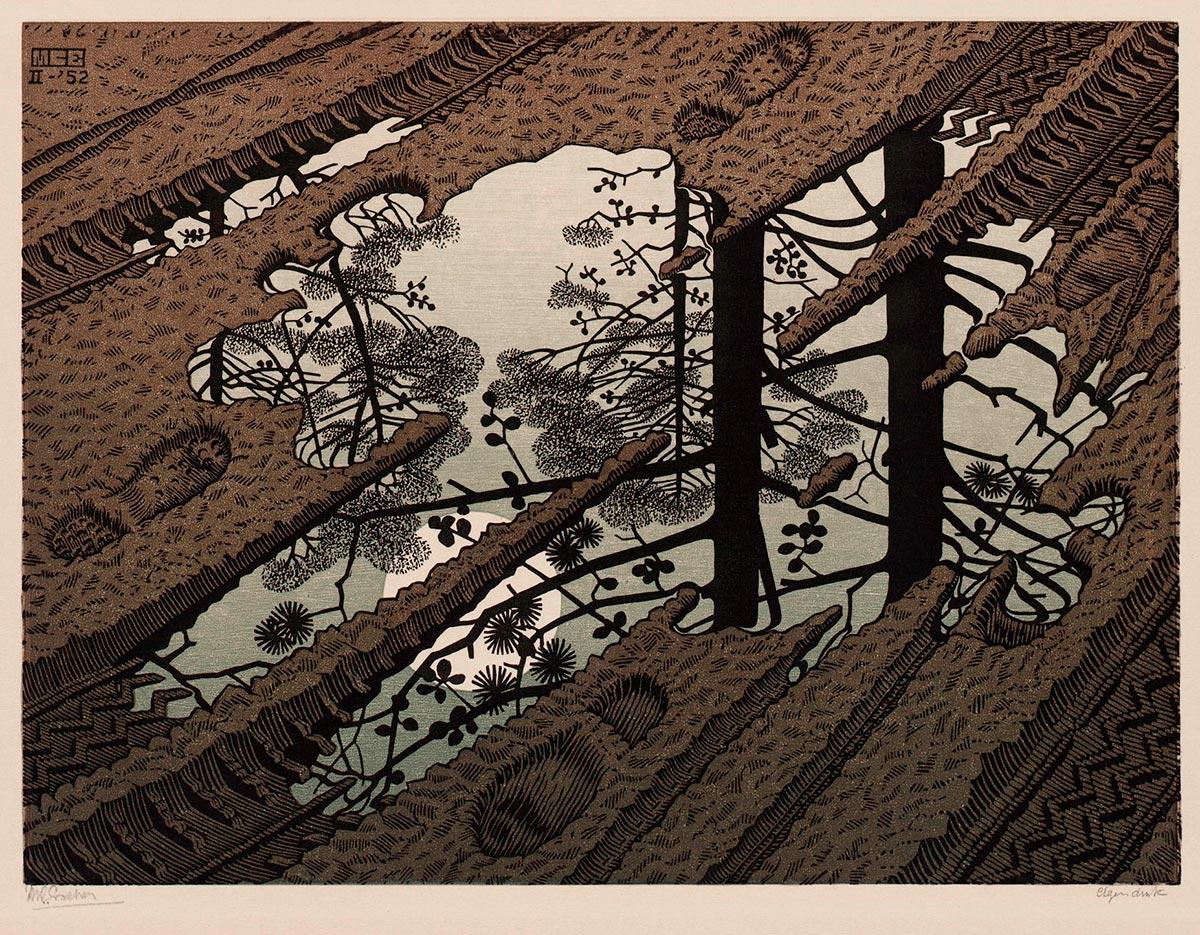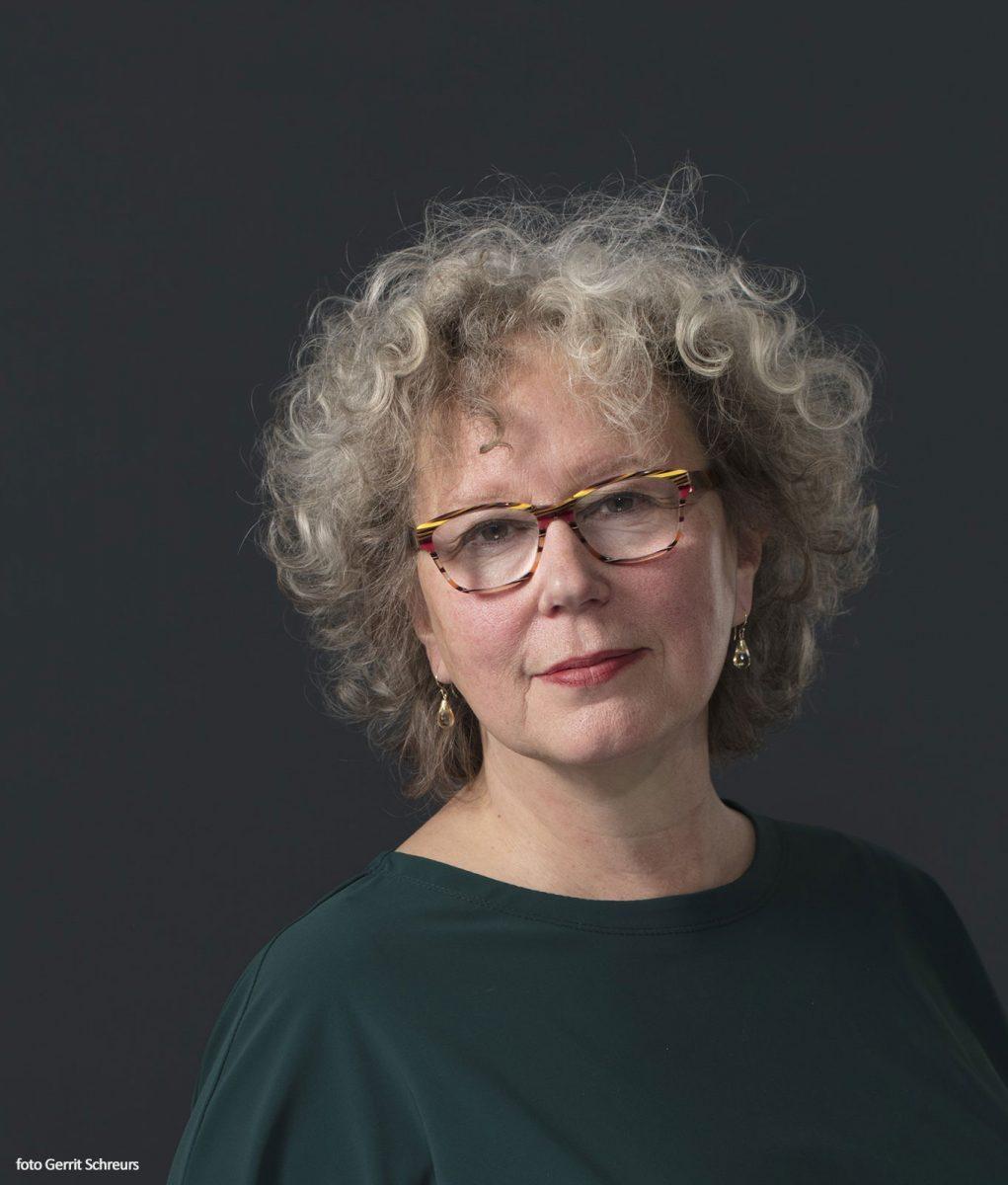

I am writing this story in late November. Autumn was slow to arrive this year. The leaves were late changing colour and it took longer to turn cold. Now that the rain and storms have arrived, temperatures have dropped. Escher's print Puddle captures this time of year perfectly. The beautiful colours and the bare branches demonstrate just how good an observer Escher is.

It is one of those woodcuts that could so easily be overlooked, if one is not careful. It is very easy to think "Oh yes that's a puddle in a slightly muddy path". I always associate this print with the lowland heath and dunes of the Veluwe, a national park situated in the heart of the Netherlands. We can see tyre tracks, presumably left by a forester, or tractor tracks; bicycle tracks, or even impressions left by the tyres of a child's pushchair and big footprints. These are our first impressions.
As you move on to the next print, a nagging thought takes hold in your head: “What did I actually see just then?” This is a question that those who do not take the time to look slowly at an Escher print often ask themselves. It is this added dimension that Escher brings to many of his prints that partially explains why his work continues to fascinate us to this day.
Escher is famous not only for his optical illusions, such as Drawing Hands (1948), or his transformation prints in which bees turn into fish, or indeed for his fascination with perpetual motion. He is also famous for his ability to establish a one-to-one relationship between his prints and us, his audience. That nagging question inside your head - “surely there must be more to this print than just tyre tracks and the reflection of branches in a puddle of water"? -, prompts you to take a second, closer look.
What did I actually see? The second time around we notice the colour. It suddenly dawns on us that the sand is brown. That is striking, because Eschers preferred printing medium is black ink on white paper. This print captures not only the brown sand, but also the improbable beauty of the silver glow of the full moon in a cloudless night. To achieve this effect, Escher uses a very light green. It is the type of green that seems grey and yet it evokes the illusion of the silver glow of an enormous moon. The perfectly round moon is tucked behind the branches and has therefore been left white.
I myself have experienced such a beautiful moonlit night on the Veluwe. However, I confined myself to staring at the sky and looking straight ahead of me into the forest. Escher, on the other hand, reveals the enormity of the universe. He does this in his customary manner, by reflecting the glow of the moonlight in the puddle through the branches. Only when we realise that we are not looking down into the puddle, but up at the sky via the moon’s reflection, does the print acquire that immeasurable depth. The unpaved road is in fact the frame in which Escher captures the universe! Suddenly, we find ourselves trapped in a hall of mirrors where the floor is in fact the sky. What we see is the reversal of reality, an exploration of eternity.
Although Escher clearly has an eye for detail, he does not force it upon us. Nor does he allow detail to dominate. We only see it when we pay attention. Only later, when musing over this Puddle or looking at the print in a book or on the internet, do we realise that our first impression might not be the impression that Escher sought to create, and that there is more to this image than meets the eye. This work reminds us not to act in haste. As humans we yearn to understand, absorb and experience everything instantly. Escher's work does not lend itself to this. His prints demand attention and time. If you give them the attention and time they deserve, you will be amazed at what you can see in a puddle.
More stories about Escher



